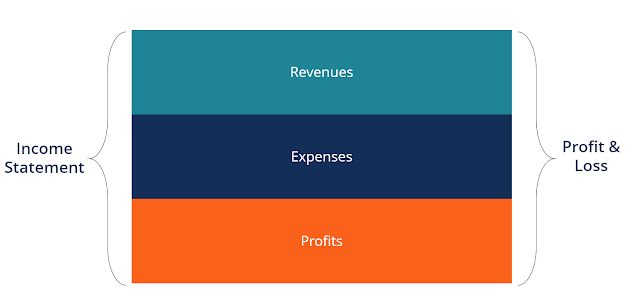What is the most important type of decision that the financial manager makes both in finance raise and operation of business to sustain for a long period of time?
The allocation of assets to various investment options is the most crucial form of decision for a financial manager (i.e. capital budgeting). Financial planning, investing (spending money), and financing are all responsibilities of the financial manager (raising money). The financial manager's primary purpose is to maximise the firm's worth, and his or her decisions frequently have long-term consequences.
- Finance Functions
- Investment Decision
- Financial Decision
- Dividend Decision
- Liquidity Decision
- Authorship/Referencing
What strategies are available to shareholders to help ensure that managers are motivated to act this way?
The corporation's executive management serves as an agent for the company's equity owners (principals). Directors and executives, on the other hand, may not always behave in the best interests of the shareholders. "Agency difficulties" emerge as a result of this. An agency problem is a conflict of interest inherent in any relationship where one party is expected to act in another's best interests. In corporate finance, an agency problem usually refers to a conflict of interest between a company's management and the company's stockholders. The board of directors is elected by the shareholders of a corporation to oversee and govern the management and to make corporate decisions on their behalf. As a result, the board is directly responsible for protecting and managing shareholders' interests in the company.
The following choices can apply-
A. Write contracts that ensure that the interests of the managers and shareholders are closely aligned.
B. Ensure that under performing managers are fired.
C. Ensure that employees are paid with company stock and/or stock options.
D. Mount hostile takeovers
These option can improve the agency relation between the manager and shareholders of the company except Ensure that employees are paid a percentage of the company's net income.
Who usually reads the financial statements? List at least three different categories of people. For each category, provide an example of the type of information they might be interested in and discuss why.
One category of people who read the financial statements are the "Investors".
The Investors refer to the retail public who have invested in the stock of the company. The investors would like to know how profitable their shares are in the long run. They (Investors) would be typically interest in these three ratios:
1. The Net Profit Margin (NPM) - It is the ratio of the net profit to the net sales and basically indicates as to how much profit the business is making. A higher net profit margin indicates that the business is doing well and they can continue to invest in the shares
2. The return on Equity (ROE) - It is the net income divided by the total shareholder equity. It shows as to how much return the investor makes when he stays invested in the company for the long term. A higher ratio would mean more profitable for the investor.
3. The Debt/Equity (D/E) ratio: The investors would look at how much debt the company has. A very large amount of debt is bad as the company may not be able to service it in time. So a lower D/E would be beneficial.
Following are the persons which read financial statements:
1. Customers = When a customer wants to consider a supplier for their major contracts, it reviews the Financial statement of supplier to understand the financial ability of supplier to provide goods and services for long time as per the contract. Customers use current ratio, Quick ratio, Working capital, Profitability ratio etc to evaluate supplier.
2. Investors = Investors are the owner of the business and they want to know how the company is performing for this reason they read financial statements. Investors are more concerned about profitability so they review profitability ratios like Net profit ratio, Return on capital employed, Earnings per share etc.
3. Lenders = Lender read the financial statement to know the financial ability of borrower to repay the loan with interest charges. Lenders use solvency ratios for evaluation like Debt Equity ratio, Interest coverage ratio etc.
4. Suppliers = Suppliers uses financial statement to make a decision on whether it is safe to provide credit to the Customer or not.
5. Rating agency = It uses financial statement to provide the credit rating to the company. They uses solvency ratio for evaluation like Debt Equity ratio, Interest coverage ratio
6. Company management = Management evaluates financials to make important operational and financial decisions. They use Turnover and operating performance ratios like Receivables turnover ratio, Inventory turnover ratio etc.
Who are the stakeholders and what are their stakes?
The events in the articles are summarized below:
• G is an electric equipment manufacturer who have leaked many chemicals into a river.
• There were no regulations against its dumping during the time.
• Some years later regulators prohibited such dumping and decided to make G liable for cleanup.
• G contends that its dumped chemical was non-toxic.
Stakeholders are people, groups, and things who may benefit or suffer from the operation of a business.
A stakeholder map places the stakeholders as they relate to the company.
Stakeholders of the company are divided into owners, employees, consumers, government, and community.
The stakeholders mentioned are government, community, and owners.
• Government: have a stake in making sure G starts the cleanup process on time, pays penalties, and complies with environmental laws.
• Community: want a clean environment, low pollution, and healthy setting
• Owners: want to protect corporate interest and maintain high profit margins
The government rank the highest in legitimacy, power, and urgency.
• Legitimacy: it has created laws to penalize G for polluting.
• Power: its power is through law and legislation which can effect G’s business operations.
• Urgency: G has to comply with clean up or it may face more regulatory barriers.

